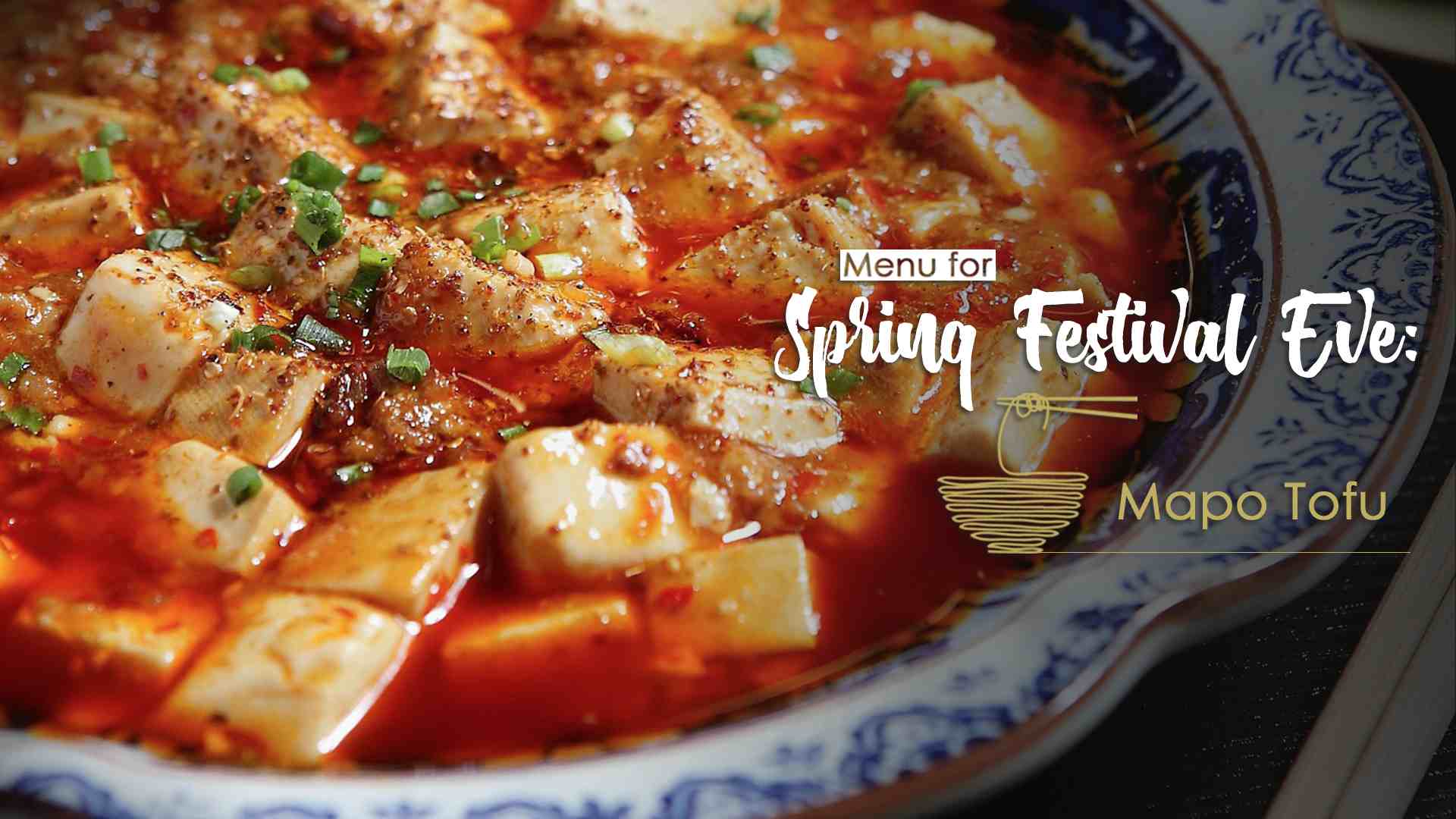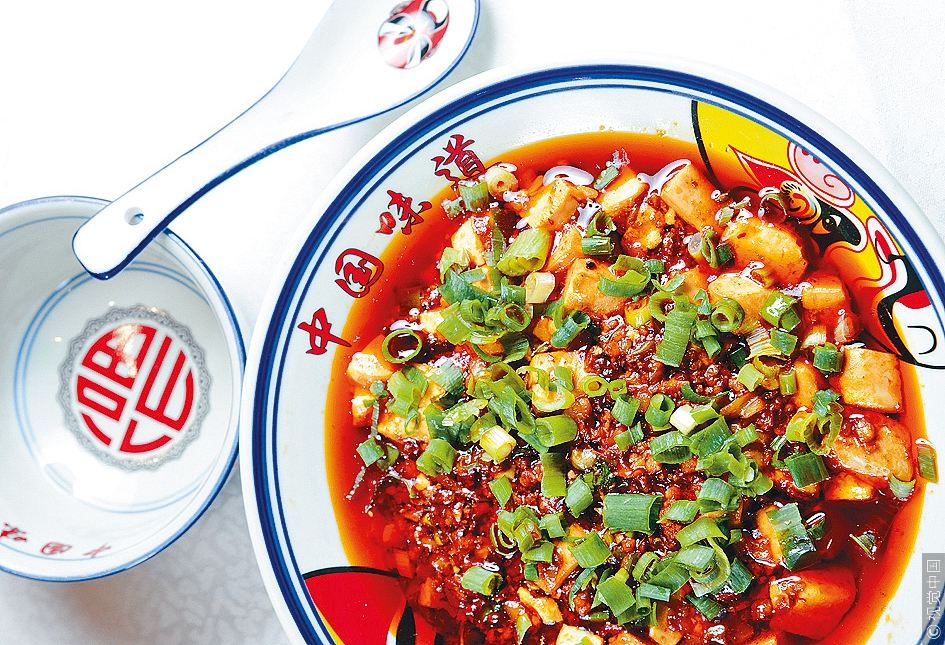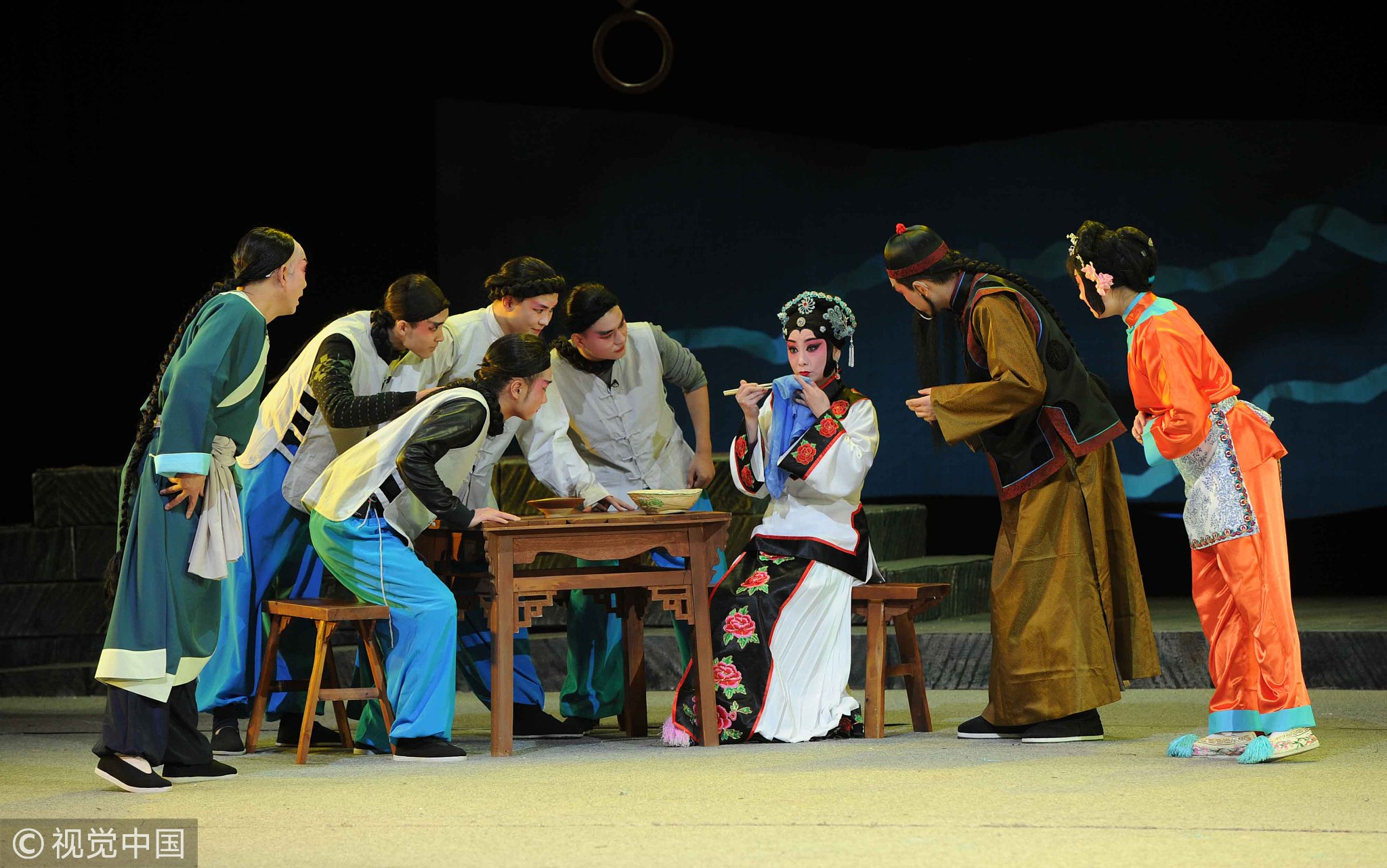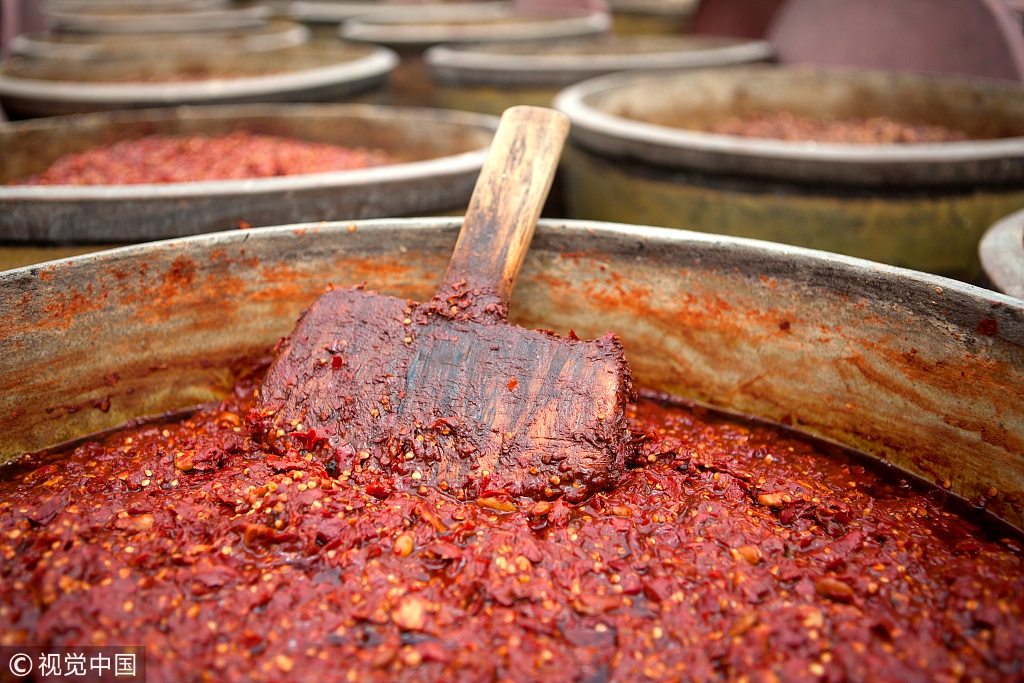
Culture
22:04, 16-Jan-2019
Menu for Spring Festival Eve: Mapo tofu
Updated
19:51, 17-Jan-2019
By Hong Yaobin
01:24

Indispensable to a Chinese Spring Festival Eve table is a hot and spicy dish. It's fiery color and mouth-burning taste symbolize good fortune and booming days in the New Year.
Nothing says Chinese spicy food more than Sichuan cuisine. And Mapo tofu, at the heart of a host of snacks and delicacies from southwest China's Sichuan Province, enjoys a vaunted reputation both domestically and internationally.
Among a variety of home-cooked Chinese dishes, it is a typical one that does not involve a great deal of preparation and experience, and brings the authentic flavor of one of the eight major Chinese cuisines.

Mapo tofu /VCG Photo
Mapo tofu /VCG Photo
Sprinkled with minced meat and chopped spring onion, the famous spicy food combines soft bean curd tofu – a healthy ingredient high in protein and calcium but low in cholesterol and fat – and a spicy chili and bean sauce.
The served meat can be pork or beef depending on personal preference. It is also recommended to add some ginger slices and cloves of garlic, as well as Sichuan pepper, which will contribute to a very integrated flavor and open up your appetite.
Featuring snow-white tofu set in a red chili sauce and topped with chopped green scallion, the dish is perfectly balanced, not only in its rich taste but also in the way it's presented.

Japanese actor and singer Haruma Miura eats Mapo tofu on a TV show.
Japanese actor and singer Haruma Miura eats Mapo tofu on a TV show.
Its distinct flavors have made it a famous dish outside of China including Japan, Singapore and many Western countries.
Fewer people, however, know that the globally famed delicacy was invented by a lower-class woman in the Qing Dynasty (1644-1912), whose real name was Wen Qiaoqiao. The dish is named after her nickname, Mapo, which refers to a pockmarked woman.
The legendary lady, who eked out a living opening a food stand with her husband on the outskirts of Sichuan's capital city of Chengdu, showed her intellectual superiority and talent in cooking and created a signature dish that has been favored by many generations to come.

Sichuan opera "Legend of Chen Mapo" featuring the stories about the legendary lady and her signature dish is staged at the local theater in Chengdu, southwest China's Sichuan, January 29, 2016. /VCG Photo
Sichuan opera "Legend of Chen Mapo" featuring the stories about the legendary lady and her signature dish is staged at the local theater in Chengdu, southwest China's Sichuan, January 29, 2016. /VCG Photo
Legends around Mapo's life, with her magical recipe, are passed down through word of mouth, works of historians and anthropologists, and local drama and opera.
The magic behind the most authentic Mapo tofu, however, is reserved in a local chili sauce – Pixian chili bean sauce from Pixian County in northwest Chengdu.
Located in the heart of Sichuan Basin, the county is dominated by nice flat plains at an average height of around 500 meters above sea level with massive streams running through.

Pixian chili bean sauce /VCG Photo
Pixian chili bean sauce /VCG Photo
It provides a favorable environment for growing red peppers and broad bean – the main ingredients for the sauce – thanks to its abundant land and water. At the same time, the mild climate brings complexity and uniqueness to the flavor profiles of the chili bean sauce made here.
Dubbed the "soul of Sichuan cuisine," the chili broad-bean sauce from the small county in southwestern China was inscribed into the second batch of China's National List of Intangible Cultural Heritage in June 2008.
The tasty sauce also is a must-have for every Chinese household, while the tofu delicacy featuring it has become a must-try for Chinese food lovers.
(Cover image by Du Chenxin)

SITEMAP
Copyright © 2018 CGTN. Beijing ICP prepared NO.16065310-3
Copyright © 2018 CGTN. Beijing ICP prepared NO.16065310-3